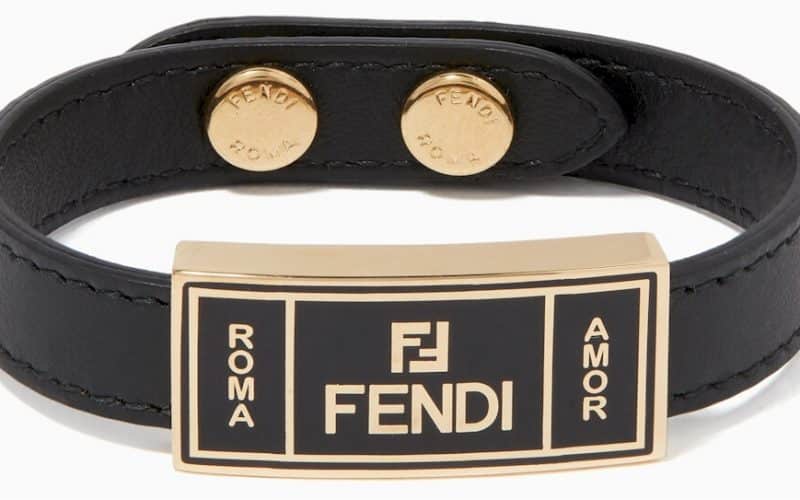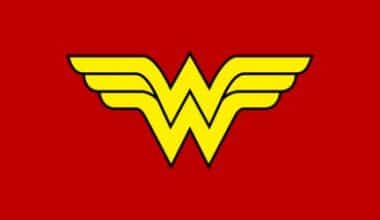In the fashion world, the Fendi logo is instantly recognizable. It has gone beyond the original brand and has become its own entity. People unfamiliar with the Fendi brand may recognize the double “F” logo due to its widespread recognition.
But the question on many lips, including yours, is, “Where did the inspiration for the Fendi logo come from, and what elements make it up?” Let’s find out.
What is Fendi?
Fendi is a fashion house based in Rome that the LVMH Mot Hennessy Louis Vuitton conglomerate owns. It was named after its founders, who opened a fur and leather goods shop in 1925. Since then, the company has often returned to leather and fur products, creating exclusive collections with high-end materials. It manufactures accessories, clothing, footwear, and perfumes while adhering to luxury and innovation principles.
Fendi’s Evolution
The Fendi brand is synonymous with luxury. The Italian fashion label is known for its distinctive double “F” logo and its daring bags that are meticulously crafted. For nearly a century, the fashion label has always looked ahead, inspiring its creative designers to create newer, more original products while keeping its collections more affordable and inspiring for its loyal customers.
Fendi is still the same brand that a young Karl Lagerfeld stood out in as artistic director, bringing the brand to everyone’s attention and showing the masses how different and stunning some materials can look. That being said, let’s go back in time and see how this fashion label got its start.
The History of Fendi
Eduardo Fendi and his wife, Adele Fendi, founded this fashion label in Rome, Italy, in 1925. Fendi has always been associated with opulence and luxury since its inception. Fendi began by producing leather goods and quickly progressed to producing fur goods, for which the company is still well-known today.
The brand was also a family business from the beginning. Eduardo and Adele’s five daughters were heavily involved in everything, from creating innovative new ideas to selling luxury items to eager consumers looking for stylish items to add to their wardrobe collection.
Eduardo died in 1946, but his wife and daughters continued the business. What began as a fashion label focused on beauty and innovation has remained true to its roots and has never strayed from them.
Karl Lagerfeld Joined Fendi
Karl Lagerfeld was welcomed to Fendi in 1965. Lagerfeld created the iconic double “F” emblem as creative director, an abbreviation for Fun Furs.
While many fashion houses now oppose fur sales, it was a popular material. Lagerfeld propelled Fendi into the fur business, propelling the company to the top of the fur industry.
Rather than just making fur coats, Lagerfeld used the material for ready-to-wear designs, accessories, and whatever else came to mind. This reduced the cost of our products for the average Fendi customer and gave the material a whole new purpose.
Lagerfeld also collaborated closely with the Fendi family’s daughters to develop new products. At this point, the daughters were still powerful and heavily involved in the company’s day-to-day operations.
The designs became more innovative and began incorporating more colors, making the brand’s products more desirable and distinctive. Previously an exclusive purchase—a preserve of the rich and famous—the creatives at Fendi reworked “lower-quality” fur into something the average Fendi customer could afford. This also enabled the brand to set more affordable prices.
Lagerfeld also oversaw the launch of Fendi’s ready-to-wear collection in 1977, which was followed by a shoe line in 1978. Nonetheless, in the 1970s, Fendi released several artisan collections to relentlessly expand the fashion house, with leather and fur items always leading the way.
The Evolution of the Fendi Brand
Adele Fendi died in 1978, causing a shift in the brand’s hierarchy. Each Fendi daughter took over a different aspect of the fashion house, with Lagerfeld remaining in charge of the creatives. Fendi continued to grow and evolve, setting the pace in the luxury fashion market by constantly innovating while remaining true to its Italian roots.
The 1980s were a watershed moment for Fendi, as the brand stormed the global fashion market. The fashion label also created scents for men and women and uniforms for Rome police officers. The first Fendi store in the United States opened in the late 1980s on New York’s Fifth Avenue, with the Fendi granddaughters also involved in the operation. They assisted in the design of new items and helped to expand the brand even further.
The Fendi Baguette
The Fendi Baguette is undoubtedly the most popular Fendi design. Silvia Fendi designed the bag in 1997, sparking a handbag revolution for the fashion house. Several celebrities, including Naomi Campbell, Madonna, and others, rushed to get their hands on the bags.
The simple, fashionable bag was available in various styles and inspired more legendary Fendi designs in the following years. The Baguette is still one of Fendi’s most coveted bags and one of the brand’s best-selling pieces.
Today, many fashionistas around the world carry the Baguette. And there have been over a thousand variations since the Baguette was invented! It is said that Baguette’s success prompted LVMH to purchase shares in Fendi. Other well-known Fendi bags include the Roll, Ostrich, and Biga, all created between 1999 and 2003.
LVMH Acquired Fendi
Fendi was bought out by LVMH and Prada in 1999, with the chairs of both fashion houses owning a majority stake. Despite the sale, Fendi was still managed by the Fendi family’s third-generation daughters.
Silvia Fendi collaborated with Karl Lagerfeld for over 20 years until he died in 2019. Following his death, she was appointed creative director the following year. She is best known for designing some of the world’s iconic bags. In the bags, she aimed for lightness, practicality, and functionality.
Kim Jones Joined Fendi
Fendi has grown from strength to strength while remaining true to its Italian roots and empowering the Fendi women.
Silvia Venturini Fendi, Eduardo and Adele’s granddaughter, eventually took over the artistic management of the Fendi accessories range (which inspired her Baguette design) and the menswear collection. However, in 2020, Fendi hired Kim Jones as the artistic director of women’s fur, ready-to-wear, and haute couture collections.
According to Women’s Wear Daily, Jones is collaborating closely with the Fendi granddaughters, particularly Silvia, who remains an influential figure in the brand. He is the first person outside the Fendi family to join the label in a vital role since Karl Lagerfeld, whom the brand honored in 2019 with its fall fashion show in Rome following his death.
The fashion house paid homage to its Rome roots, and the entire show was dedicated to Lagerfeld and his legacy with Fendi. It was the best way to thank Lagerfeld for all his contributions to Fendi’s success while keeping the brand looking forward.
The Evolution of the Fendi Logo
The Fendi logo is well-known worldwide, and its double “F” monogram has become iconic. However, the original luxury fashion house logo is far from today’s solid bold inscription.
1925 — 1965
The first Fendi logo, created in 1925, featured a squirrel holding a nut while standing delicately on a branch. This was an unusual symbol for a fashion brand. The logo served as a mascot for the founders. Eduardo Fendi gave a squirrel painting to his wife, Adele, because he always said she was as busy as a squirrel.
The inscription was placed in a strict sans-serif uppercase font below the image and included the slogan “1925”. The logotype was rendered in turquoise blue on both sides, which looked refined on the brand’s bright yellow wrapping paper.
1965 — 2000
Karl Lagerfeld joined Fendi in 1965 and quickly changed the company’s logo. He created the iconic double “F” symbol in seconds, with the black logotype beneath written in a tall, solid, straight uppercase sans-serif font.
2000 — 2013
The “FF” symbol was removed from the official version of the Fendi logo in 2000 and began to be used primarily for prints on fabrics and leather. The brand’s visual identity was now made up of a single capitalized inscription in a refined sans-serif typeface, with the letters separated by an ample space, making the logo appear airy and light despite the thickness of the letter’s lines.
2013 – Present
The Fendi logo was redesigned in 2013 with a smooth, rounded font. Its uppercase letters are now rendered in a font similar to the Basic Commercial Soft-Rounded Pro Bold font, with soft, sleek lines but classic solid shapes.
A delicate slogan, “ROMA,” complements the massive logotype in the same font but smaller size: the slogan honors Rome, the brand’s hometown and primary inspiration.
Fendi Symbol
Aside from the double “F” inscription, also known as the inverted “Zucca,” Fendi has a script emblem. Helvetica Bold is the Fendi font used on the note. Surprisingly, the “F” on the Fendi symbol differs from the one on the script emblem.
The Fendi Logo’s Design Elements
Shape:
The double “F” Fendi symbol (also known as the inverted “Zucca”) is one of the most recognizable logos in the fashion industry today. Karl Lagerfeld, a young Parisian graphic designer, created it in 1965. The logo appears on various Fendi products, including clothing, shoes, handbags, wallets, and bags.
While Fendi is one of the most valuable fashion houses in the world, it also has the unenviable distinction of having one of the most counterfeited logos.
The brand name is capitalized in the Helvetica Bold font in the Fendi logo.
Color:
The Fendi logo is black, representing the luxury fashion brand’s elegance, dominance, and supremacy, while yellow represents joy, happiness, and optimism.
The Future of Fendi
Like many other fashion labels, Fendi aspires to be more environmentally conscious, using recycled materials and generating less waste. However, while Prada has stated that it will no longer use fur, Fendi has indicated that it will continue to use the material.
During an interview with Women’s Wear Daily, Antoine Arnault, LVMH’s head of environment, communications, and image, reiterated the company’s desire to become more eco-conscious. Time will tell whether they will keep their word.
How can you tell a fake Fendi logo?
The iconic metal F’s that are part of the authentic Fendi logo should never be aligned directly across from one another but rather should be staggered on either side of the rectangle. When the logo appears as a monogram print, specifically in the Zucca & Zucchino iterations, the FF’s blocks should be of equal size; if they were lined up, they would stack perfectly. This applies specifically to the Zucca & Zucchino iterations.
The History in a Nutshell
Fendi is a well-known Italian fashion house founded in 1925 by Eduardo and Adele Fendi, a husband and wife team. The firm specializes in luxury fashion and is primarily owned by the French multinational conglomerate LVMH. Its signature Baguette Handbag is one of the most sought-after fashion items.
The LVMH Group owns most of Fendi, but the Fendi family’s granddaughters, led by Silvia Venturini, continue to run the company daily. Silvia is in charge of designing women’s and men’s clothing, as well as a variety of accessories.
Fendi’s headquarters remain in Rome, Italy, where it all began nearly 100 years ago. We are confident that the Fendi logo and brand will continue to delight its customers with fantastic fashion items and, of course, more iconic bags.
Related Articles
- BAG BRANDS: 2023 Top 25+ Luxurious and Designers Bag Brands
- Expensive Purse Brands: List Of Most Expensive Purse Brands
- DESIGNER BAG BRANDS: Exhaustive List of the Top Best and Affordable Brands
- RETIREMENT AGE IN TEXAS: Best Easy Guide & Rules In 2023 (Updated)
- Handbag Brands: the Best 15 Brands in 2023(Updated!)






